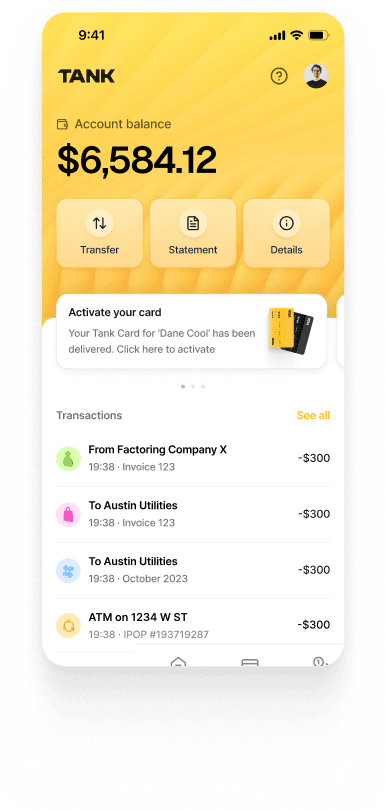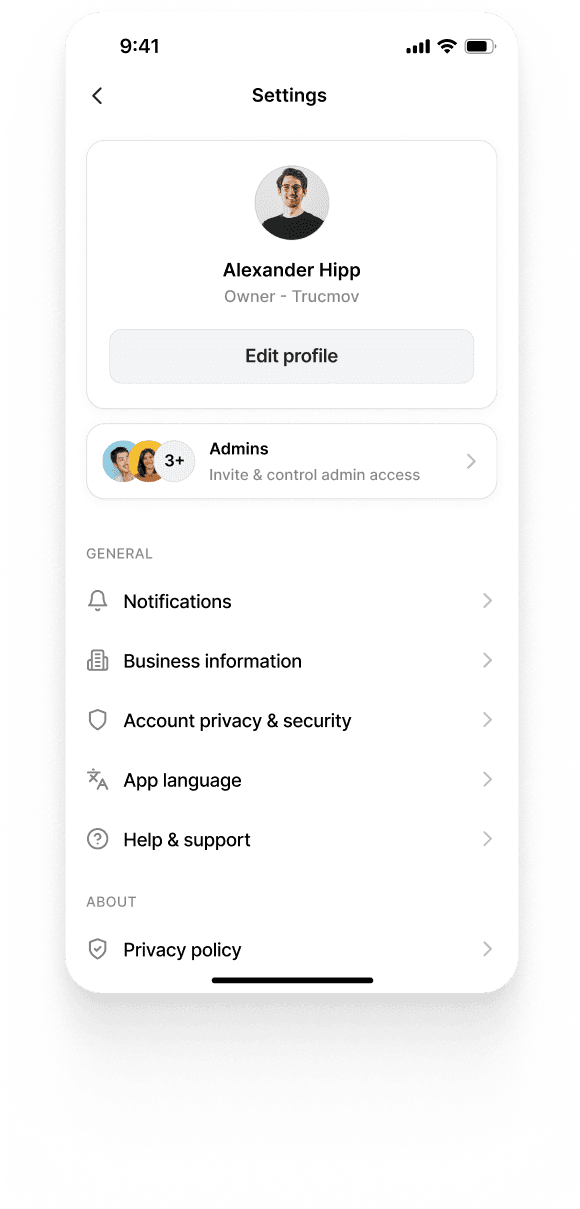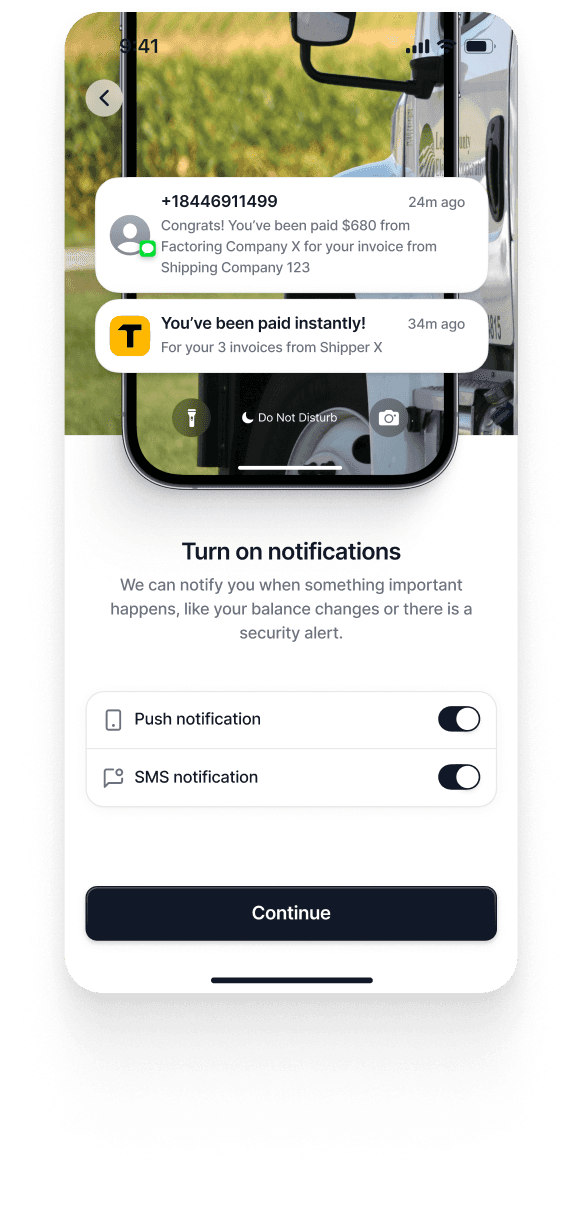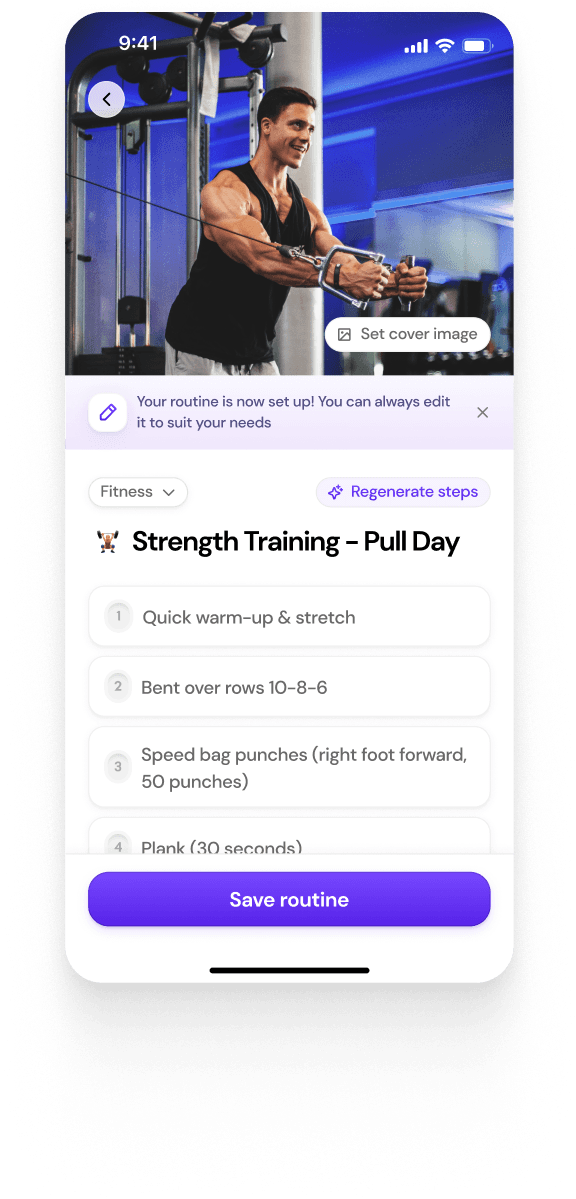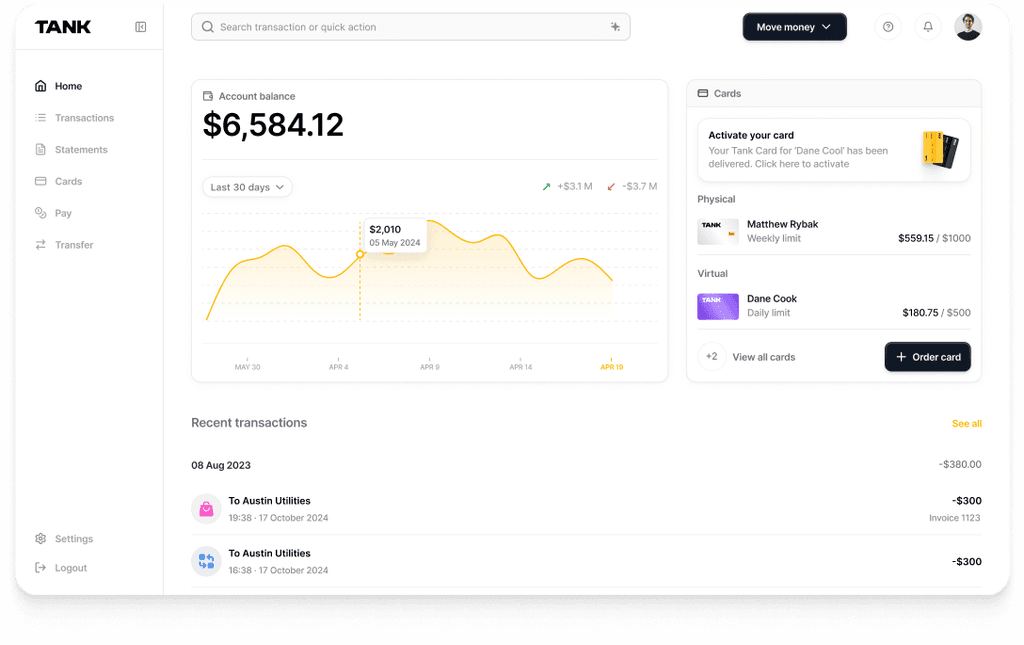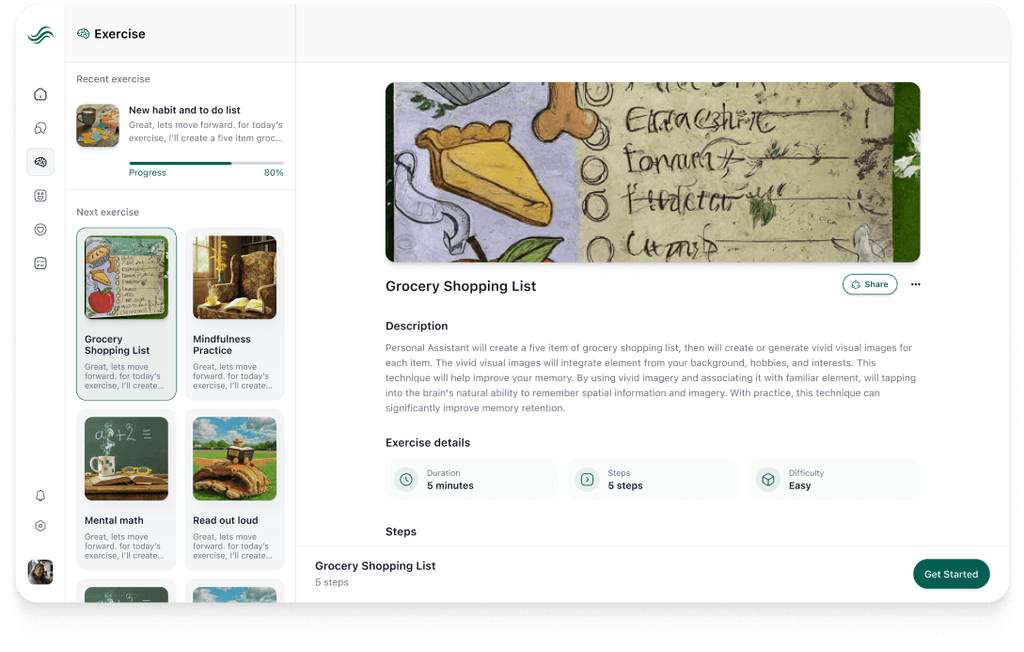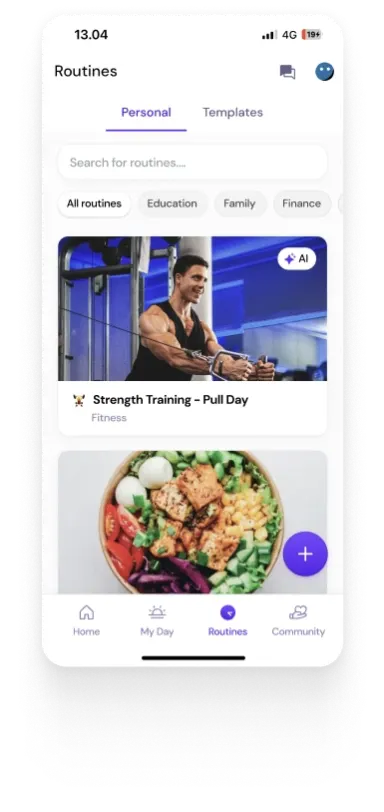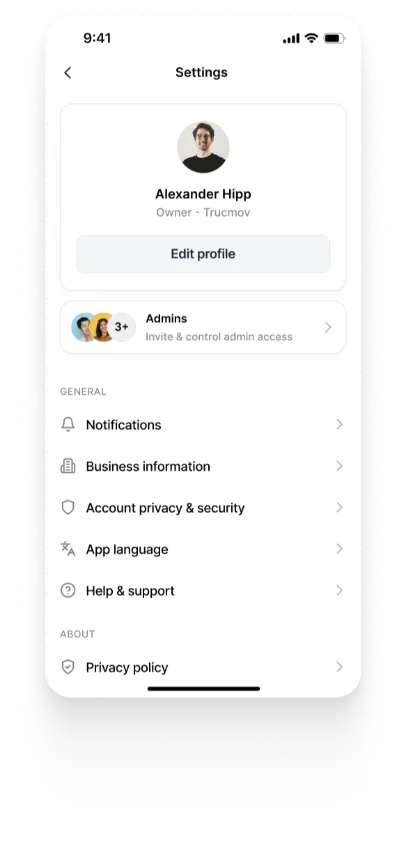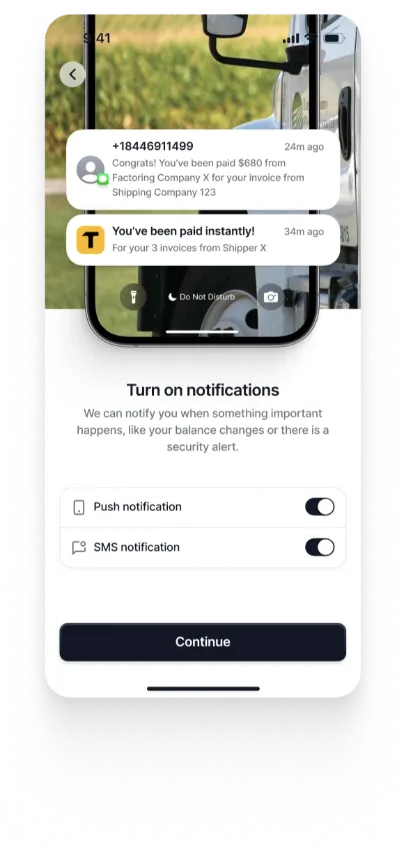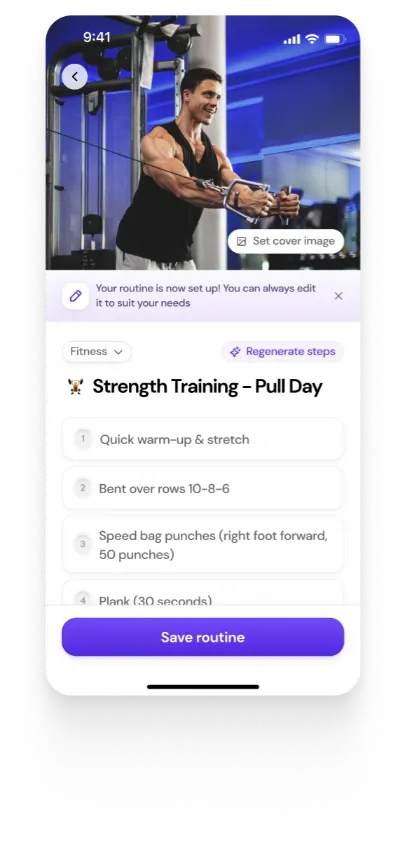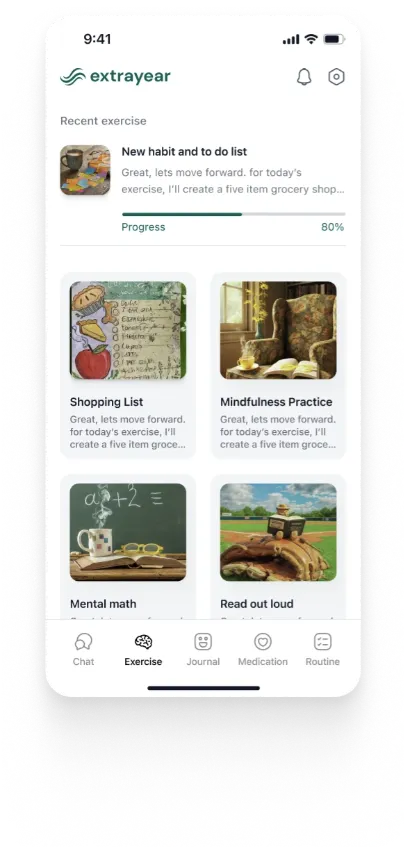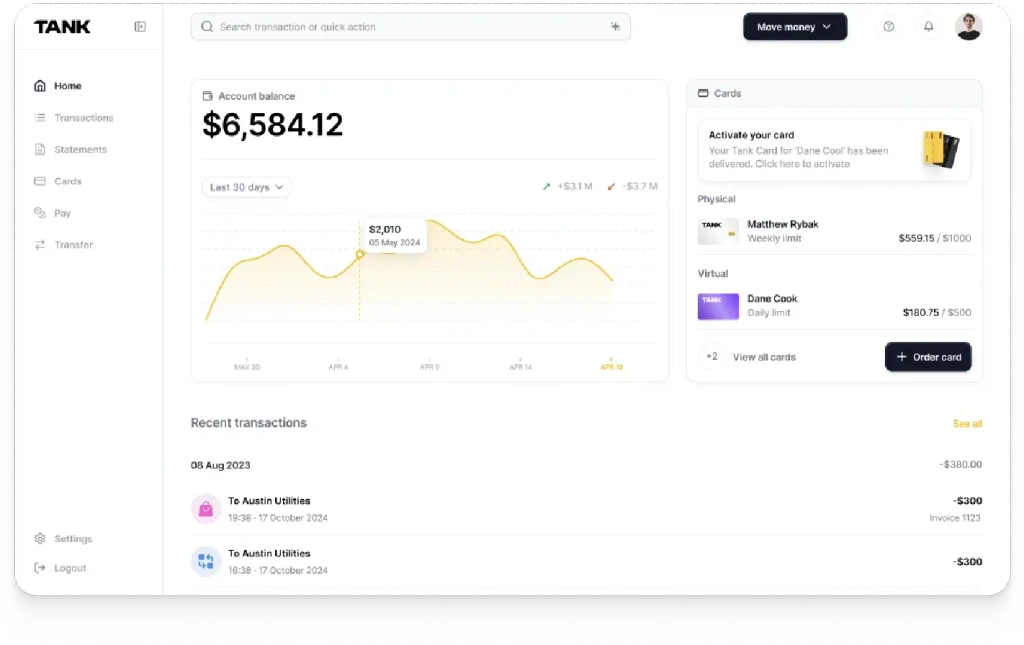Automating the Go-To-Market Process: Strategic and Technical Perspectives
Summary
Startups increasingly rely on automation across roles—from founders to developers and PMs—to streamline go-to-market (GTM) execution. Automation enhances pricing strategies, marketing outreach, sales enablement, onboarding, and data integration. By embedding AI and workflow automation, teams gain efficiency, scalability, and precision, achieving enterprise-level impact with minimal headcount.
Key insights:
Founders Streamline Execution: Automation helps founders optimize pricing, marketing, sales, and onboarding, enabling small teams to scale effectively.
Developers Enable GTM Infrastructure: Technical teams integrate tools, ensure clean data flow, and embed AI into workflows for real-time responsiveness.
PMs Drive Data-Led GTM: Product managers use automation to enhance onboarding, user engagement, and experimentation using frameworks like AARRR.
Composable Tech Stacks Prevail: Modular systems integrated via APIs allow startups to use best-in-class tools while maintaining unified data pipelines.
AI Enhances Decision-Making: Predictive analytics, content generation, and lead scoring powered by AI inform and automate key GTM steps.
Automation Scales Human Impact: Rather than replacing people, automation reduces repetitive tasks so teams can focus on high-value work.
Introduction
A go-to-market (GTM) strategy is a plan that connects a product to its customers, covering how a company positions, sells, and delivers its offering. In today’s startup landscape, automation has become indispensable in executing GTM strategies efficiently. Startups are utilizing automation and artificial intelligence (AI) to accomplish more with less, to scale more quickly, and produce better results due to limited funding and a smaller workforce.
Approximately 80% of startup owners report implementing automation or artificial intelligence (AI) in their workflows to enhance inefficient or expensive GTM process steps. Automation is a crucial tool for efficiency and consistency in various modern GTM approaches, from traditional sales-led activities to product-led growth (self-serve models). Businesses that consistently use the appropriate technologies in their GTM operations are better able to adjust to changes in the market and increase operational effectiveness.
In this insight, we explore how GTM automation applies to different roles in a startup: founders, developers/technical teams, and product managers. Every job takes a different approach to the GTM process, from technical implementation to product-centric execution to strategic planning, and each can use automation to improve efficiency and increase effectiveness.
Startup Founders: Scaling Strategy with Automation
For founders, GTM automation is about leveraging technology to execute an efficient strategy and conserve precious resources. Finding the correct audience, positioning the product, selecting channels, and creating a repeatable sales process are all components of a well-defined GTM strategy, and automation may help in each of these areas. In reality, high-achieving businesses use data to automate tedious work and improve their processes, allowing their staff to concentrate on high-value tasks like closing deals and fostering connections. Founders make sure their small workforce is used where human interaction is most important by automating the busywork in marketing, sales, and customer involvement. Importantly, automation does not imply a "spray-and-pray" strategy; when implemented properly, it enables highly customized, focused execution at scale, making a tiny business function similarly to a much larger company.
1. Strategic Pricing and Revenue
Pricing strategy is a prime example of where automation and data can guide better decisions. Many SaaS businesses are reconsidering static pricing strategies in light of the growth of AI-driven goods and usage-based services. They relate pricing to real usage, results, or customer value produced rather than just pay per user seat. It can be difficult to balance price and value, but automation makes it easier by monitoring usage indicators and managing invoicing without human intervention.
In SaaS, "pay per result" pricing is a new trend that directly ties revenue to customer success. As compute costs decrease and data becomes more accessible, businesses can charge based on actual results, guaranteeing that consumers pay according to the value they receive. For founders to swiftly iterate and experiment with models (subscription vs. usage tiers, free vs. premium feature levels, etc.), they should think about investing in billing platforms or revenue management tools that offer dynamic and usage-based pricing. Treating pricing as a component of the product experience rather than just a financial consideration is an actionable insight.
Founders can find the best course of action more quickly by automating pricing analytics (such as tracking how various product segments use the product) and using artificial intelligence (AI) to model the effects of price changes. Price optimization software and billing systems (like Metronome or Paddle) that support adjustable pricing rules and A/B testing of pricing pages are examples of tools in this field.
2. Marketing Automation and Demand Generation
On the front end of GTM, marketing automation is a staple for reaching and nurturing customers at scale. Whether it's HubSpot, Marketo, Mailchimp, or another tool, founders should make sure that their marketing team (even if it's just one person) has a strong automation platform so that lead generation, social media scheduling, and email campaigns can be managed without continual manual labor. These platforms are capable of automatically segmenting audiences and sending tailored content sequences or messages in response to user actions (such as registering on the website or downloading a whitepaper). Consistent, prompt interaction with prospective clients creates a pipeline while the staff is asleep.
AI-driven solutions, for example, are used by startups today for intelligent outreach and prospecting. These systems automatically identify good leads and send them customized emails or advertisements. The website's AI chatbots may welcome users and respond to frequently asked queries, thereby qualifying certain leads instantly. Since software handles a large portion of message distribution and follow-up, founders should view these tools as force multipliers that allow one person to do tasks that previously required a complete team. Maintaining quality and relevance is crucial; even automated messages feel individualized thanks to contemporary technologies that allow mass hyper-personalized campaigns to target specific demographics. Software for competitive intelligence, such as Crayon or Kompyte, for instance, can track the actions of rivals and instantly notify the team of findings that can be incorporated into marketing messaging. An automated marketing engine methodically raises awareness and interest, enabling the firm to gain traction without relying on haphazard efforts.
3. Sales Enablement and Funnel Automation
As interest turns into leads, automation supports the sales process in multiple ways. The goal of founders should be to create a repeatable sales pipeline with tech-assisted workflows at every level, from lead qualifying to deal closure. The foundation is provided by customer relationship management (CRM) systems, such as Salesforce, HubSpot CRM, or Pipedrive, which keep track of each interaction and transaction. A CRM that has been coupled with automation can allocate leads to sales representatives automatically, set up follow-up reminders, and even use AI to record call notes. This automation and structure are frequently absent from startups that have trouble growing their revenue. Successful teams, on the other hand, use playbooks in which, for instance, a new demo request results in an instant tailored email, pertinent case studies are automatically provided, and if a lead becomes cold, they go into a re-engagement sequence after a certain amount of time.
Founders should implement sales enablement technologies that integrate training and materials into representatives' workflows. For example, a platform such as Seismic or Highspot can provide a representative with the most pertinent sales deck or demo video according to the prospect's industry. This guarantees that sales representatives do not have to fumble through folders to find the information they need at the correct time.
Top-of-funnel outreach is another high-impact area. AI-based sales development "co-pilots" can now perform a large portion of the SDR job, including prospect analysis and sequentially delivering well-tailored cold emails and LinkedIn messages. By employing an "AutoSDR" (Autonomous Sales Development Representative) strategy that substituted an AI workflow for manual prospecting, Apollo notably succeeded in scheduling 1,800 meetings every quarter in an entirely automated manner.
Although outcomes differ, founders can safely automate lead nurturing and first contact so that human salespeople only get involved when a prospect is highly qualified or demonstrates genuine interest. This eliminates a significant amount of labor that would otherwise be squandered. To optimize targeting, it is essential to integrate marketing and product usage data into the sales process. For example, if a product-led SaaS detects a free user in a big organization exceeding specific usage limits, an alert can automatically trigger sales to contact the user (a product-qualified lead).
By demanding a data-driven sales culture in which each lead is monitored and evaluated algorithmically, as well as by offering tools (such as Gong or Chorus for call analysis) that provide representatives with AI-powered coaching and feedback, founders and startup owners can set up the tone. To free up the sales force to concentrate on relationship-building, negotiation, and other activities, the overall plan is to automate anything that can be repeated.
4. Customer Success and Onboarding
GTM does not end at the sale – retaining customers and expanding accounts are just as vital. In this case, even with a small startup team, automation guarantees a consistent onboarding and customer success process.
Founders should make an early investment in automating customer onboarding. To help new customers get set up, employ in-app product tours, tutorial videos, and prompted emails instead of a strictly manual hand-holding approach. Real-time user behavior adaptation is possible with automated onboarding procedures. For instance, they can provide tailored advice depending on the features a user has utilized or prompt them if they have not finished a crucial setup step. This lessens the possibility that a new client may become lost or perplexed during those critical initial days.
An automated procedure offers a quicker, more seamless introduction and ensures that every user feels taken care of, while manual onboarding frequently fails to scale to numerous customers or meet user needs. The "aha" moment in the product, such as completing the first transaction, uploading data, or introducing coworkers, should be defined by the founders. Then, they should make sure the automated onboarding process is designed to swiftly guide customers to that point. Product teams can construct these interactive tutorials and tooltips without knowing any code by using specialist tools like Userpilot, Appcues, or WalkMe. Alternatively, multi-channel onboarding journeys can be built using the capabilities of a customer engagement platform like Braze.
Beyond onboarding, customer success automation facilitates large-scale user monitoring and assistance. In order to identify at-risk accounts or upsell chances, founders can set up health score systems that use data, support requests, and survey answers fed into an algorithm. A run of unsolved support issues or a low login frequency, for example, may automatically set off an alert for the customer success manager to take action, or even send the customer a customized check-in note. Because the program keeps an eye on things, no client "slips through the cracks" because the staff is too busy. When CSMs manage dozens of accounts apiece, they are forced to be reactive without assistance; however, customer success automation can bring up the appropriate insights at the appropriate moment, allowing the team to be proactive.
To re-engage customers, founders should push their teams to adopt playbooks for retention. For instance, a system may automatically send an email with a usage suggestion or offer if it notices that a client has not used a key feature. The post-sales process can be significantly standardized and automated by using one of the entire customer success systems (Gainsight, ChurnZero, Totango, etc.) that incorporate product data, support data, and more. Better retention and growth are the results: satisfied clients stick around and spread the word, which lowers the cost of expansion.
Developers & Technical Teams: Building the Automated GTM Stack
Developers and technically-minded team members play a critical role in making GTM automation a reality. Although the strategy and tools may be chosen by the founders and growth leads, developers, data engineers, or "ops" engineers are frequently the ones who integrate, modify, and construct the data pipelines that enable automation. The Go-To-Market Engineer, who combines software engineering with revenue operations, is a new position that is starting to appear in some firms. Businesses are progressively integrating technical knowledge into GTM implementation rather than relying just on manual RevOps or SalesOps responsibilities.
With an emphasis on internal automation, these GTM developers create code and scripts to link systems and get rid of tedious chores. GTM engineers create unique automations and integrations in place of salespeople or marketers manually cranking operations. For instance, they can automate CRM data entry, link the product database to marketing email triggers, or integrate AI tools into the sales workflow. As a result of the engineers' optimization of the backend workflows, the GTM engine is smarter and faster, allowing sales teams to move more quickly and concentrate on closing deals. This implies that a developer's work has a direct bearing on client satisfaction and income generation.
1. Integrating a Composable Tech Stack
A key responsibility for technical teams is architecting the GTM tech stack. Adopting a modular design as opposed to a single monolithic platform is now considered best practice. Stated differently, entrepreneurs select the "best-in-class" technology for each purpose, such as HubSpot for marketing automation, Salesforce for customer relationship management, Segment for customer data, Snowflake for data warehouses, Mixpanel, or Amplitude for product analytics, and then integrate them via middleware and APIs.
To guarantee that data flows seamlessly throughout the customer lifetime, developers make sure various systems communicate with one another. For instance, when a user registers for the product (as detected by the product analytics tool), the developer may create an event stream (using Segment or custom webhooks) to send the data to the CRM (to generate a lead for sales if criteria match) and the marketing automation system (to initiate a welcome email sequence). Despite the use of several tools, the integrated strategy avoids silos and provides a single perspective of the client journey. Adopting numerous SaaS tools without adequate integration can result in fragmented data and inconsistent reporting, which is a common mistake known as "tool overload."
To prevent this, developers connect systems in real-time utilizing integration platforms (iPaaS solutions like Workato or Zapier) or custom microservices. To guarantee that every team works with the most recent data, they may also set up a central data warehouse and employ reverse ETL tools (like Hightouch or Census) to sync data back out to different SaaS apps. Because automation is only as good as the data that feeds it, the technical team must likewise place a high priority on data structure and cleanliness. Setting up data validation, handling duplicate records, and creating consistent schemas for customer data are all necessary to ensure that, for example, the "business size" column has the same meaning across all systems. To put it briefly, developers design the wiring and plumbing that enables all GTM tools to work together as a single, cohesive system.
2. Leveraging AI and Workflow Automation
Developers are increasingly tasked with embedding AI and advanced automation into GTM processes. This may entail developing internal machine learning models or integrating external AI services. To power lead scoring, for example, a development team may utilize an AI API, which would automatically score incoming leads according to a predictive model instead of a fixed rule. They could also incorporate an AI content generator into the marketing content pipeline, which would be as easy as using OpenAI's API to create email copy ideas that the marketing team could then improve.
Using a service like Gong's API, developers may install a conversational AI assistant in sales that connects to the phone system to record and examine sales calls. Recent trends indicate that artificial intelligence (AI) is now at the center of many GTM activities, from conversation intelligence that analyzes call transcripts for coaching insights to predictive lead scoring. Developers ought to get knowledgeable about these AI technologies and how to safely link them to corporate data. Technical teams must strike a balance between automation and human interaction. For instance, they may design the system so that the AI can manage standard consumer outreach or questions while forwarding more sophisticated queries to a human to ensure a positive customer experience. They also put protections in place (e.g., establishing permission stages or quality checks if utilizing generative AI for content).
Another area is creating trigger-based workflows and “bots” that act on events. Developers can utilize custom scripts or workflow automation tools to set up a system that, for example, sends an automated email acknowledging the issue and a Slack alert to the team whenever a high-priority consumer opens a support request. Alternatively, an automated workflow might provide a sales funnel extension opportunity anytime the product logs indicate an enterprise customer is approaching their use limit (this was one of the "expansion plays" suggested by GTM specialists).
These automated processes guarantee prompt follow-ups without depending on a human being remembering to review a report. Technical professionals frequently use a playbook approach when creating such workflows: they work with business stakeholders to identify missed opportunities or repetitive tasks, then automate the process to handle them. Examples include delivering a personalized intro offer to inactive leads after a few months or automatically reaching out to recent website visitors with tailored outreach.
3. Analytics and Data Pipelines
Supporting the GTM process also means giving each team the data and insights they need. Implementing analytics tracking and instrumenting the product and marketing channels to ensure that events and metrics are gathered consistently falls within the purview of developers. Writing code in the product to record user events (such as sign-ups, feature usage, and conversions) and send them to analytics providers may be one way to accomplish this. It also entails putting in place pipelines to compile data into dashboards from many sources, including as CRM, app analytics, and website analytics. Instead of waiting for batch reports, entrepreneurs are increasingly requesting real-time analytics pipelines.
Technical teams may employ real-time streaming or Kafka technology to update dashboards of important GTM metrics in real-time. For instance, a founder may wish to view the current conversion rate in a funnel or the number of sign-ups as of the moment. Developers enable the team to react more quickly by providing real-time data flows, possibly allowing them to make last-minute campaign adjustments if today's results do not look right.
Additionally, developers can set up automated analytics alerts. The system can notify the team to look into a measure that deviates from the intended range, such as a conversion rate that goes below X percent. GTM teams are data-driven thanks to this type of automation, which makes sure that no crucial information is overlooked and that choices are supported by facts.
By creating scripts that combine information from billing, product, and marketing databases, developers also assist in defining and calculating metrics such as Customer Acquisition Cost (CAC), Lifetime Value (LTV), retention rates, etc. Product and growth teams employ these metrics to inform strategic frameworks (e.g., the AARRR "pirate metrics" framework, which tracks Acquisition, Activation, Retention, Referral, and Revenue).
4. Supporting Growth Experiments
Another technical contribution is enabling rapid experimentation. Companies that experiment, measure, and iterate rapidly are the ones who succeed; GTM techniques rarely get everything right at first. By creating infrastructure for feature flagging and A/B testing, developers enable this. To test new features or modifications to the marketing site, for instance, they may incorporate an experimentation platform (such as LaunchDarkly, Optimizely, or an open-source substitute) inside the product. This enables the team to conduct growth experiments in a controlled, data-driven manner, such as comparing two onboarding funnels to determine which produces higher activation or experimenting with different price page layouts.
By accurately recording data and assisting with result analysis, technical specialists guarantee that tests are statistically sound. For the growth team, they might also design internal tools, including a straightforward interface for setting up referral or promotion programs without requiring a developer for every modification. Developers contribute to the institutionalization of a Build-Measure-Learn cycle (popularized by the Lean Startup) across marketing and product improvements by automating the deployment and measurement of trials. As a result, the GTM approach develops based on facts rather than intuition and a culture where ideas can be tested out rapidly.
5. Ensuring Reliability and Security
Lastly, as technical stewards, developers must ensure the automated GTM machinery is robust and secure. Revenue or reputation can be directly impacted by automation failures (think of an email automation that goes awry and spams clients, or a registration flow outage). As a result, developers create script tests, monitor important automations, and have backup plans in case of system failure. They also focus on compliance; for example, integrating customer data across systems must adhere to privacy legislation such as the CCPA and GDPR. Security is crucial when integrating numerous tools: Data pipelines and API keys must be protected. Before integrating new SaaS tools, developers must check them for security and compliance and implement least privilege policies (e.g., if marketing wishes to link a new email tool to the user database, make sure it can only access the relevant fields).
In summary, developers and technical teams are the architects and engineers of an automated GTM engine. They assess and include the appropriate tools, provide data accessibility throughout the company, and create automations that enable the firm to outperform its competitors. They allow the organization to implement a cohesive GTM strategy by emphasizing clean data, strong integrations, and astute use of AI and automation frameworks. When done well, the technology becomes less noticeable and the company sees only scalable, seamless go-to-market processes.
Product Managers: Leveraging Automation in GTM Execution
Product managers (PMs) sit at the intersection of product development, marketing, and sales, which puts them in a unique position to drive GTM success. The PM, often known as the product marketing manager, is in charge of planning product launches, making sure the product satisfies consumer demands, and streamlining the user experience from initial interaction to devoted client. In these jobs, automation is a strong ally that enables project managers to make decisions based on actual facts and provide a better experience without depending on manual labor. Strategic insight (using analytics and frameworks to guide GTM plans) and executional excellence (deploying tools and automated experiences that improve conversion, onboarding, and retention) are the two main areas of concentration for a PM in GTM automation.
1. Data-Driven Insights and Frameworks
Product managers champion a data-driven approach to go-to-market. They frequently map the user experience and pinpoint possibilities or bottlenecks using frameworks like AARRR (Acquisition, Activation, Retention, Referral, Revenue). By gathering and examining the metrics at each of these phases, automation enters the picture. With an analytics dashboard at their disposal, a PM can rapidly determine, for instance, that activation (i.e., the proportion of users who finish onboarding and encounter the core value of the product) is low. They can then examine automated funnel reports to determine the user dropoff points.
Modern product analytics tools (Amplitude, Mixpanel, Google Analytics, etc.) offer automation in the form of instrumentation SDKs and out-of-the-box metrics: The system continuously monitors cohorts, conversion rates, retention curves, and other data, so PMs do not have to run database queries for each query. The analytics platform, which is initially configured by developers, continuously analyzes the data to help the PM make decisions, and the AARRR framework offers a methodical approach to prioritizing tests and improvements. For example, the PM may modify the onboarding process or launch an automated re-engagement campaign (using the marketing automation system) if retention numbers indicate that users are not returning beyond the first week.
Using survey automation (in-app NPS surveys, feedback forms prompted after significant events) to collect qualitative insights is another way that PMs rely on customer feedback at scale. They can automate the gathering and aggregation of customer opinions instead of setting up separate calls for each item of feedback. They can then devote their time to more in-depth follow-ups for the most important concerns. PMs frequently employ experimentation frameworks when designing GTM, which are essentially the scientific method applied to growth: formulate a hypothesis (for example, "a simplified price page will improve conversions"), conduct a test, evaluate the findings, and iterate. This is made possible via automation and tools.
The top GTM teams, as previously mentioned, continuously monitor metrics like CAC, conversion, and churn and quickly iterate in response to the data. Product managers make certain that the team has access to those dashboards and that an automatic system (weekly reports, alerts) is in place to assess progress. This eliminates the need for hunches when making judgments; instead, PMs can use data from automated reports to support modifications or modify strategy.
2. Automating User Onboarding and Activation
Activation – turning a curious signup into an engaged user – is often owned by product managers. Creating a successful onboarding process requires automation. Automated customer onboarding journeys can greet users, walk them through important steps, and adjust according to their behavior, as was previously said. These flows (determining which messages to send at what times, which in-app tips to display, etc.) should be designed by a product manager, who can then employ no-code tools or collaborate with developers to put them into practice. Here, automation offers uniformity and speed: regardless of when a person signs up or the volume of signups that week, all users receive a top-notch onboarding. To construct tooltip tours and guided checklists within the product, PMs may utilize a user onboarding platform such as Userpilot or Appcues.
These can be segmented (for example, a different path for a power-user versus a casual user) and are automatically triggered for new users. Additionally, they employ a marketing automation technology that is coupled with usage data to set up drip email sequences that deliver consumers timely material. For example, they send an email on Day 1 with getting-started recommendations and another on Day 3 asking if they need help. PMs make sure that no new user is left without direction by automating these touchpoints. Importantly, automation makes it possible to personalize at scale.
For example, if the system notices that a user has skipped a certain function, it can provide recommendations tailored to that feature; if a user makes a mistake, it may send an email offering support and an apology. According to the Braze example, welcome messages and onboarding procedures might change based on whether a person has reached certain milestones, giving the experience a personalized sense despite being automated. Product managers should specify certain milestones (for example, "user invites a coworker" may be a crucial activation step for a collaboration software) and set up the automated system to respond when milestones are reached (celebrate and recommend next actions) or not (send a nudge). Better activation rates result from responsive automation that accelerates users' "aha" moments. PMs also monitor these processes using in-app analytics; if data indicates that step 3 of the instruction has a high drop-off, they know to simplify or improve it. Automated onboarding effectively creates a continuous feedback loop by guiding thousands of users with little assistance from humans and using the combined behavior to inform ongoing product development.
3. Continuous Engagement and Customer Success
Product managers often work closely with customer success teams to ensure the product continues to deliver value over time. They can employ automation to reduce churn and maintain user engagement. The system might automatically highlight a high-value feature the next time a customer logs in (via an in-app message) or include a tip about it in a weekly digest email if a PM has set up feature usage triggers. Without a sales representative having to personally contact each customer, PMs can set up automated notifications when a customer's trial is about to expire and possibly a special offer to convert to a paid plan. Scalable customer education is also made possible by automation; examples include chatbots that provide fast answers to questions like "How do I accomplish X in the app?" or a knowledge base with AI-powered search.
PMs can implement these solutions, such as chatbots or Intercom's Knowledge Base, to help users quickly self-serve answers rather than relying on them to call support for every inquiry. Product-led growth (PLG) integrations, which incorporate product usage data extensively into GTM, are a notable trend. This implies that a GTM response is automatically triggered when users take specific actions, or do not. As an emerging technique, for example, businesses employ analytics platforms (such as Mixpanel and Amplitude) to monitor for signals such as "user reached success milestone" or "user met usage limit." Based on these signals, they automatically send out upgrade prompts or alert sales about a possible upsell. Together with sales and CS, product managers establish these guidelines, so transforming the product into a catalyst for marketing and sales initiatives. Even if the client base grows too big for personal monitoring, PMs can still proactively handle risks (signs of unhappiness) and growth potential (upsells, cross-sells, advocacy requests) by using such automation.
4. Frameworks and Tools for PMs
PMs use specific frameworks and tools designed for systematic growth when implementing GTM. Running growth experiments through structured sprints is a common strategy. Typically, project managers will keep a backlog of ideas to enhance a metric (like conversion rate) and utilize a prioritization system such as PIE (Priority, Importance, Ease) or ICE (Impact, Confidence, Ease) to determine which ideas to explore first. Both the deployment (feature flagging, A/B test platforms, as noted) and measurement (analytics dashboards updating KPIs in real time) of these tests are automated. Another paradigm is the North Star indicator approach, in which the team decides on a single top-line indicator (for instance, "weekly active teams" for a collaboration product) that reflects product-led growth and then aligns goals and automated reporting around advancing that metric.
PMs make sure that this measure is automatically tracked and accessible to all, frequently through Slack bot announcements or real-time dashboards on a wall screen. All GTM efforts are able to move in unison because of this emphasis. In order to keep GTM launch tasks on track, PMs can also use project management tools like Steve, Asana, Jira, and Trello. These solutions allow for automation, which eliminates the need for micromanagement by sending reminders, updating status, and more. A well-organized GTM launch plan may even be templatized, which would ensure that nothing is overlooked by automatically generating a set of activities (blog post, user email, sales training, etc.) for every new feature launch using a template in the project tool. Although this type of automation is straightforward, it eliminates errors and saves time in complex launches.
5. Bridging Teams with Automation
Product managers frequently serve as a liaison between engineering, marketing, sales, and customer success departments. By establishing common visibility and handoff points, automation can help with this bridging. When a new feature of a product is delivered, for instance, project managers can create an internal announcement stream (perhaps merging release notes with email or Slack) to notify the sales and support teams immediately of the development without having to send out individual emails to each team member. In order to close the loop between marketing promises and product usage, the PM makes sure that when marketing runs a campaign promising a feature, the product analytics will confirm whether users from that campaign actually use the feature.
This could be accomplished by automatically tracking users' in-app events and tagging users using the marketing automation system. Additionally, platforms for revenue orchestration are starting to appear, which combine information from marketing, sales, and support to offer a common customer view. PMs gain a lot from this unified approach, even though putting such a platform into place may be a company-level choice. For example, they may see in one location that Customer X received a particular campaign, began using the product, had Y support tickets, and so on. PMs are more equipped to decide where to enhance the product or modify the messaging in light of this context. These platforms are filled by automation, which syncs data from all sources. Project managers can support and set up these systems to make sure they record the metrics that are important for the success of the product.
Conclusion
The automation of the go-to-market (GTM) process represents a strategic inflection point for modern startups, enabling them to scale efficiently without sacrificing precision or personalization. As discussed in this essay, automation is essential to all functions involved in GTM execution and is not a luxury. It gives founders the opportunity to manage small teams and still accomplish enterprise-level customer success, sales enablement, and outreach. As the foundation of automation infrastructure, developers make sure that data and tools operate without hiccups while incorporating intelligence through artificial intelligence and unique workflows. Product managers, meanwhile, use automation to speed up onboarding, improve retention through data-driven engagement tactics, and match product delivery with market expectations. These functions work together to provide a unified operating system that quickly and efficiently transforms insights into action and vision into execution.
Looking ahead, successful startups will not treat automation as a bolt-on feature, but as a foundational design principle embedded into every layer of their GTM strategy. Intelligent workflows, clean data design, and decomposable software enable even small teams to function with a level of sophistication that was previously only possible in much bigger organizations. Importantly, automation enhances human interaction rather than diminishes it. Founders, developers, and project managers can concentrate on what really counts—creating unique goods, fostering connections, and reacting quickly to market signals—by delegating monotonous and reactive jobs to machines. Businesses who adopt this mentality will not only enter the market more quickly, but also more intelligently.
Authors
References
Gitlin, Jon. “5 Customer Success Automations to Prioritize Implementing.” Workato, 27 Feb. 2023, www.workato.com/the-connector/customer-success-automation/.
“Gong+Hubspot FINAL-1.” Hubspot.com, 2025, www.hubspot.com/startups/ai-gtm-strategy-for-startups.
“How AI & Automation Are Reinventing Startup GTM.” Bowery Capital, 2025, bowerycap.com/blog/insights/ai-and-automation-gtm-strategies.
“How AI Is Rewriting the Rules of SaaS Pricing | Metronome Blog.” Metronome.com, 2025, metronome.com/blog/how-ai-is-rewriting-the-rules-of-saas-pricing.
Leach, Chris. “The Top 5 Go-To-Market Motions for Startups | 310 Creative.” 310creative.com, Creative, 27 Apr. 2025, www.310creative.com/blog/go-to-market-motions.
“Master Customer Onboarding Automation | Braze.” Braze.com, 2025, www.braze.com/resources/articles/customer-onboarding-automation.
Poyar, Kyle, and Brendan J. Short. “The Best Automated GTM Plays You’re Not Running.” Growthunhinged.com, Kyle Poyar’s Growth Unhinged, 12 Feb. 2025, www.growthunhinged.com/p/automated-gtm-plays.
“The Complete Guide to GTM Engineering - OrangeOwl.” Orange Owl - B2B Marketing Partner, 3 May 2025, orangeowl.marketing/gtm/the-complete-guide-to-gtm-engineering.
“The GTM Playbook for Startups: How to Go from Zero to Revenue.” Gtmfusion.com, 26 Mar. 2025, gtmfusion.com/insights/gtm-playbook-for-startups.
“Work Smarter, NOT Harder: The Power of Automation in GTM Planning.” Kompyte.com, 2024, www.kompyte.com/blog/work-smarter-not-harder/.















